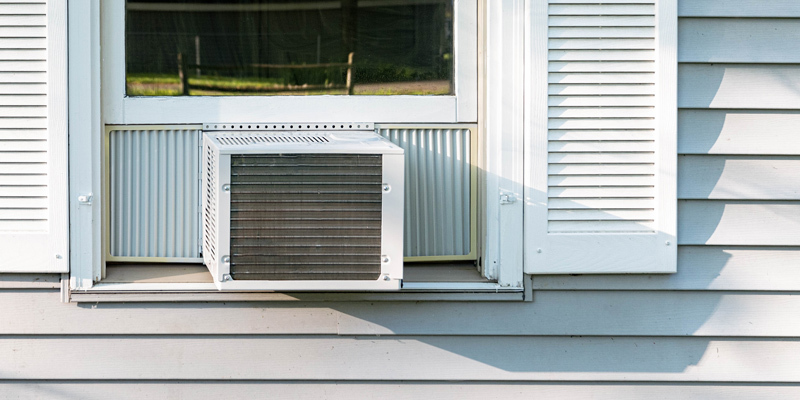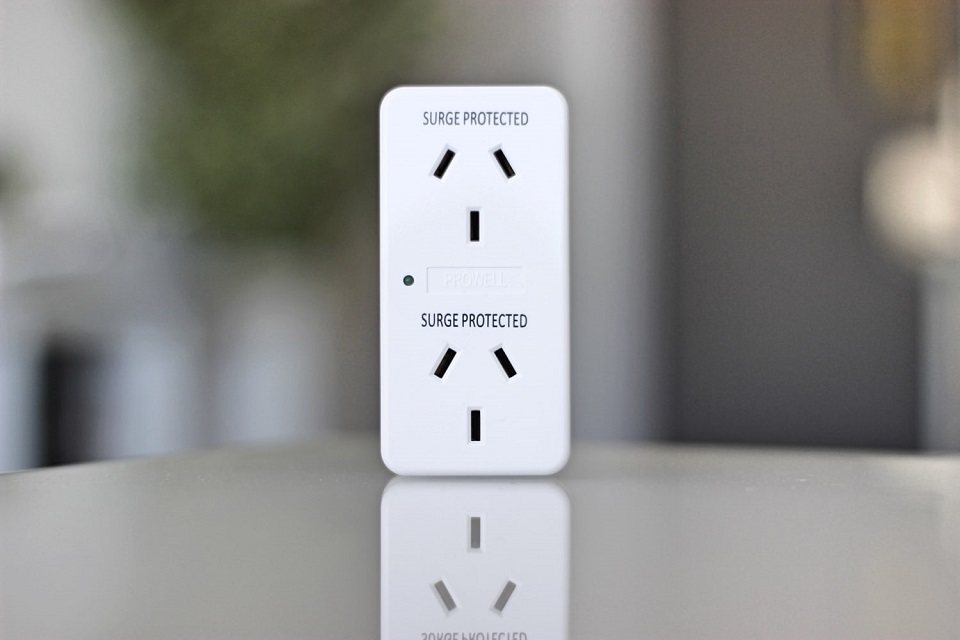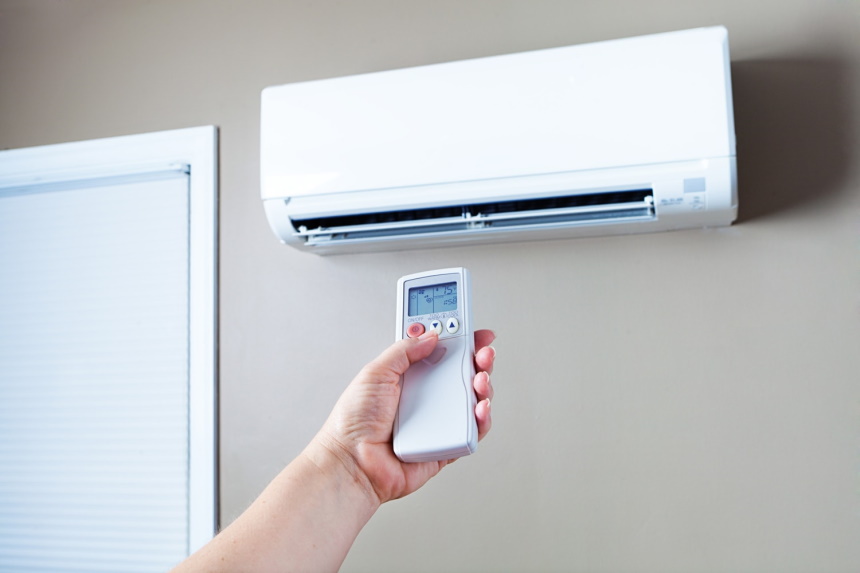

Portable air conditioner units are designed to be used in a variety of spaces and be fairly easy to move, as the name suggests. Like dehumidifiers, air conditioners pull the moisture out of humid air. Modern-day portable AC units take that water and store it in a reservoir for you to empty whenever needed. This eliminates the need for a wastewater hose. But there’s another waste that a portable AC unit makes, and that’s hot air. And unfortunately, there is no way to run a portable air conditioner without an exhaust hose.
Most people solve this issue by just running the vent hose out a window. However, not all rooms have accessible windows. If you’re looking for how to vent a portable air conditioner without a window, then you’ve come to the right place! Here, we are going to take a look at the best methods without putting your safety on the line.
One of the most common ways to vent your portable air conditioner is to put the exhaust hose through a hole you’ve drilled or punched in the wall of your room. If you own your home, it’s up to you whether you want to do this or not, but if you rent, you’ll need to make sure it’s allowed both by your building codes and, of course, your landlord.
Venting your AC unit means taking the hot air from your room and venting it outside. So, it’s important to remember that the hot air is, well, hot, and therefore can be a fire hazard as well, so you’ll need to make sure to pick the right location for your AC unit and to drill the exhaust hole in your wall. This can also be complicated by the fact that some portable AC units have dual exhaust hose systems, which may require a larger hole.
The process itself, though, isn’t all that difficult. You’ll just need to cut a hole in your wall large enough for the exhaust hose to fit through. The hole should lead somewhere where you can direct the hot air, such as the exterior of your home (outdoors) or to another room that is set up to handle the hot air, such as an indoor garage, or perhaps a laundry room (as long as it has windows that can remain open for the hot air to escape and not re-enter your home) or seasonal porch.
Don’t try to force your exhaust hose through a hole that’s too small, as that may damage the appliance. Better to have a hole that is too larger than too small.
Once you have the hose directed through the hole in your wall, you’ll need to seal the openings around the hose. Typically, people use silicone caulk to do this, as it works well as a sealant. But it’s important to remember that this will make your portable AC unit more of a permanent one in that space. But you’ll want to make sure that the vented hot air doesn’t re-enter your room through the hole in the wall you’ve just created, as that would defeat the purpose of cooling your room with the air conditioner.
Another common option for venting your portable air conditioner is to connect your unit’s exhaust hose to your existing dryer vent.
It’s important to know, though, that many people don’t overly recommend this method of venting, often due to the difference in sizes between the dryer vent and the exhaust hose. But it is something that is possible, and if you have no other options, such as a wall hole, then this may be your only choice.
You’ll want to be careful, though, as many dryer vents have smaller sized holes than the exhaust hose of your portable air conditioner. Because of this, it can be difficult for the hose of your air conditioner to connect to the dryer vent. And you want to make sure that you don’t damage or ruin the venting of your dryer and the dryer itself.
Another thing you will need to be cautious of is whether or not your dryer vent has an external port with a flap on it. This keeps things (like warm air or even vermin) from entering the dryer vent from outside. But sometimes the air conditioner exhaust hose isn’t strong enough to push this external flap, which means the hot air won’t be able to leave your house. If this is the case, you may need to remove the external flap on your dryer vent.
But your dryer vent is serving the same purpose as the exhaust hose of your air conditioner: it’s taking hot air out of the space, just in this case the air is generated by your dryer instead of the air conditioner. So, if you can connect your air conditioner hose to the dryer vent, you can be confident in knowing that it will be properly vented away, assuming your dryer venting is working and up to code.
A final option for venting your portable air conditioner is to direct the hot air through a drop-ceiling. This often works in basements that need to be cooled. This is often what’s used in computer server rooms. If you’ve ever seen one of these rooms in person (or more likely, on TV or in a movie), you’ll notice that those rooms rarely, if ever, have windows in them. But servers create a lot of heat, and that heat needs to be vented somewhere. And it’s often vented through the drop-ceilings.
The drop-ceiling works as a ventilating area. The good news is this process works very similar to venting through a wall. It’s actually less damaging, though, because you can always just replace a single panel in a drop-ceiling, as opposed to patching and repairing a wall you’ve cut a hole through.
The first thing you’ll need to do is find the ceiling panel you want to pass your air conditioner hose through. Once you’ve decided, you’ll need to cut a hole int eh ceiling panel, making sure that the hole is nice and neat and also the right size for your exhaust hose to fit through. You’ll pull the hose through the hole, and then, like with the wall, you will use a sealant around the edges to make sure the hose is held firmly in place and to keep the hot air from returning back into your room.
You’ll also need to have an exhaust duct into your ceiling space that runs to an external wall to let the hot air escape outside. This can often be difficult work and may require professional help. But once the exhaust duct is in place, and your hose is attached to it, you’re ready to go.
And that’s it! Now the ceiling panel is ready to be replaced, and your portable air conditioner is primed and ready to cool your space.
There are a few useful tips that you need to know before using a portable air conditioner:
If you’re choosing to use a portable air conditioner, then there’s no way to avoid the exhaust hose that comes with it.
But some portable air conditioners are called are now call ventless. They’re also sometimes called swamp coolers or evaporative coolers, and these appliances aren’t technically air conditioners at all. While an air conditioner water tank needs emptying to eliminate the water, the unit has pulled from the air, the water tank in an evaporative cooler must be actually filled in order to work. That’s because the water in the tank is pumped into a membrane, and then a fan forces air through that membrane. As the air passes through the wet membrane, the water evaporates, removing heat at the same time. As a result, the air that comes out of the evaporator is cooler than the air going in.
Evaporative coolers don’t need vent or water hoses and are completely self-contained, making them a great choice for anyone who’s looking for portable cooling power. But because they use evaporation to cool a space, they really only work well in areas with low humidity.
There are some places and rooms where you can’t really use a portable air conditioner to cool them. These rooms are a garage or an unfinished basement.
That’s because these spaces are often uninsulated, which means they’re not built to keep the hot air outside from coming in. So, while those spaces can sometimes be hot, using portable AC in those rooms is fighting a losing battle, as the uninsulated space has a very high heat load that a portable air conditioner just can’t handle. It’s actually why many people will vent their AC exhaust into the garage.
A portable air conditioner also needs breathing space to work. Which means you can’t tuck it out of sight in a closet and expect it to work. It needs to have open access to your room in order to cool the space effectively.
Portable air conditioners often have more BTUs, and therefore, use more electricity to cool a room as a window unit would. This is because they generate waste heat indoors instead of outside, which creates more heat for the unit to deal with. This is why venting your portable unit properly can be so important.
If that heat waste is just making its way back into the room, it means your portable AC unit just has to cool it all over again, making it work harder, which will use more electricity, and cost you more on your utility bills.
So, make sure you’ve properly vented your AC unit to keep it working at its best.
It’s possible to have a portable AC unit in rooms that normally won’t support them. While cooling your apartment in the summer is fairly easy for any portable AC unit, you can also cool rooms such that are enclosed with no direct access to the outdoors through a window. It’ll take research, possibly cutting holes into your ceiling, wall, or dryer vent, but once you know how to vent a portable air conditioner without a window, you’ll have more opportunities to cool your space when the weather gets warm.





